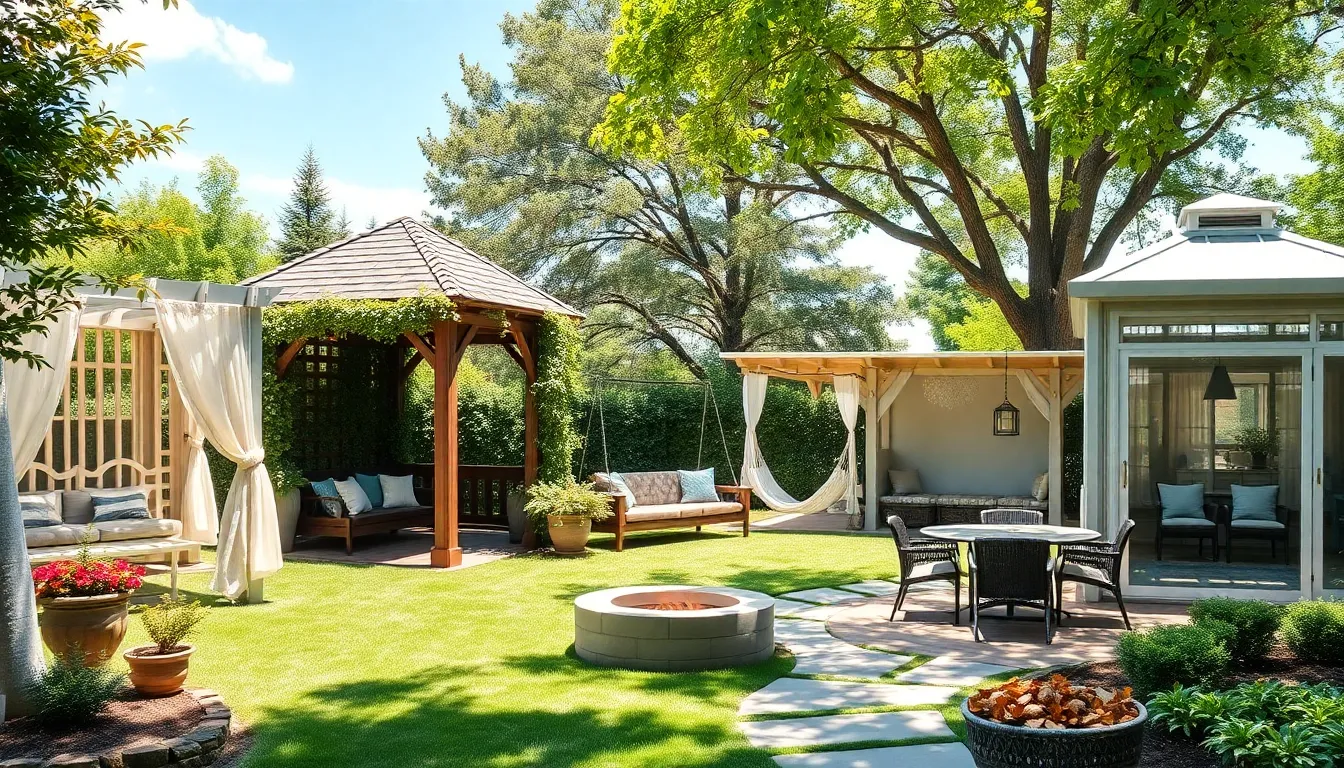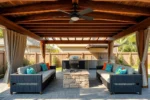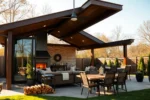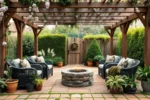Transforming your backyard into a welcoming retreat begins with the right structure, and gazebos offer a perfect blend of style and function. Whether you’re taking your first step into outdoor living or looking to elevate an existing space, customizable gazebo designs can adapt to your unique needs and aesthetic.
In this article, you’ll discover ten versatile gazebo ideas that suit a range of homes and lifestyles, from cozy corners to spacious entertaining areas. Each design highlights practical features and personal touches, making it easy to envision how a custom gazebo can enhance your outdoor experience.
Understanding Gazebo Customization Options
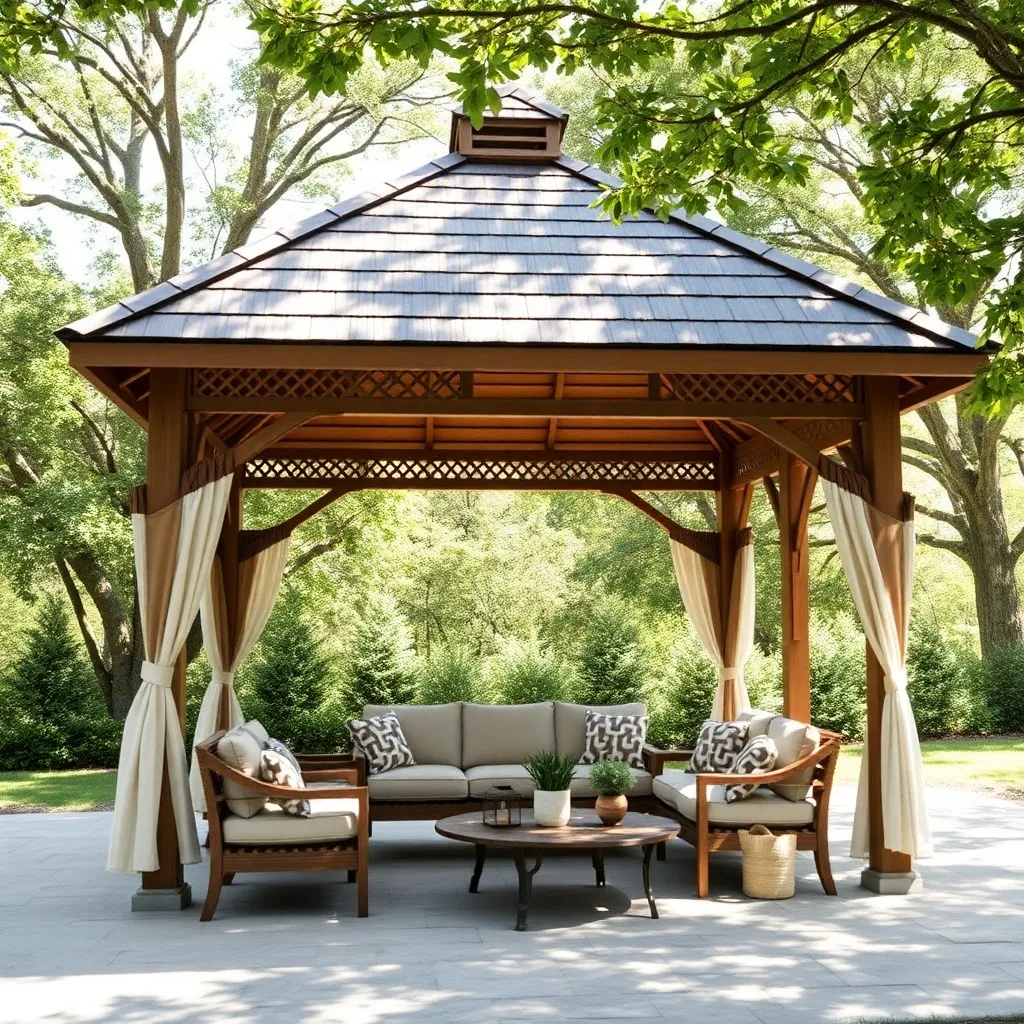
When customizing a gazebo, start by selecting the right materials to ensure durability and style. Popular choices like cedar or redwood offer natural resistance to decay, while aluminum frames provide a lightweight, low-maintenance option. Consider adding features such as screened walls for insect protection, built-in seating, or retractable canopies to enhance comfort and usability.
Design details can transform a basic gazebo into a personalized outdoor retreat. Focus on dimensions that suit your space, typically between 10×10 to 12×16 feet, to accommodate furniture and movement comfortably. For advanced customization, integrate lighting, ceiling fans, or even solar panels to extend usability into evenings and different seasons, creating a versatile shelter tailored to your lifestyle.
Classic Wooden Gazebo Designs

Classic wooden gazebos offer timeless charm and durability, making them a popular choice for any backyard. Opt for cedar or redwood as your primary material to ensure natural resistance to rot and insects, which reduces maintenance over time. When planning dimensions, a 10×10-foot footprint is ideal for accommodating seating and a small table, while allowing enough space for comfortable movement inside.
To enhance both aesthetics and functionality, consider incorporating open lattice sides or built-in benches for added comfort and style. For advanced customization, use weather-resistant finishes and sealants annually to protect the wood and preserve its appearance. Additionally, integrating a pitched roof with overhangs will provide better rain runoff and shade, extending your gazebo’s usability throughout the seasons.
Modern Metal Frame Gazebos
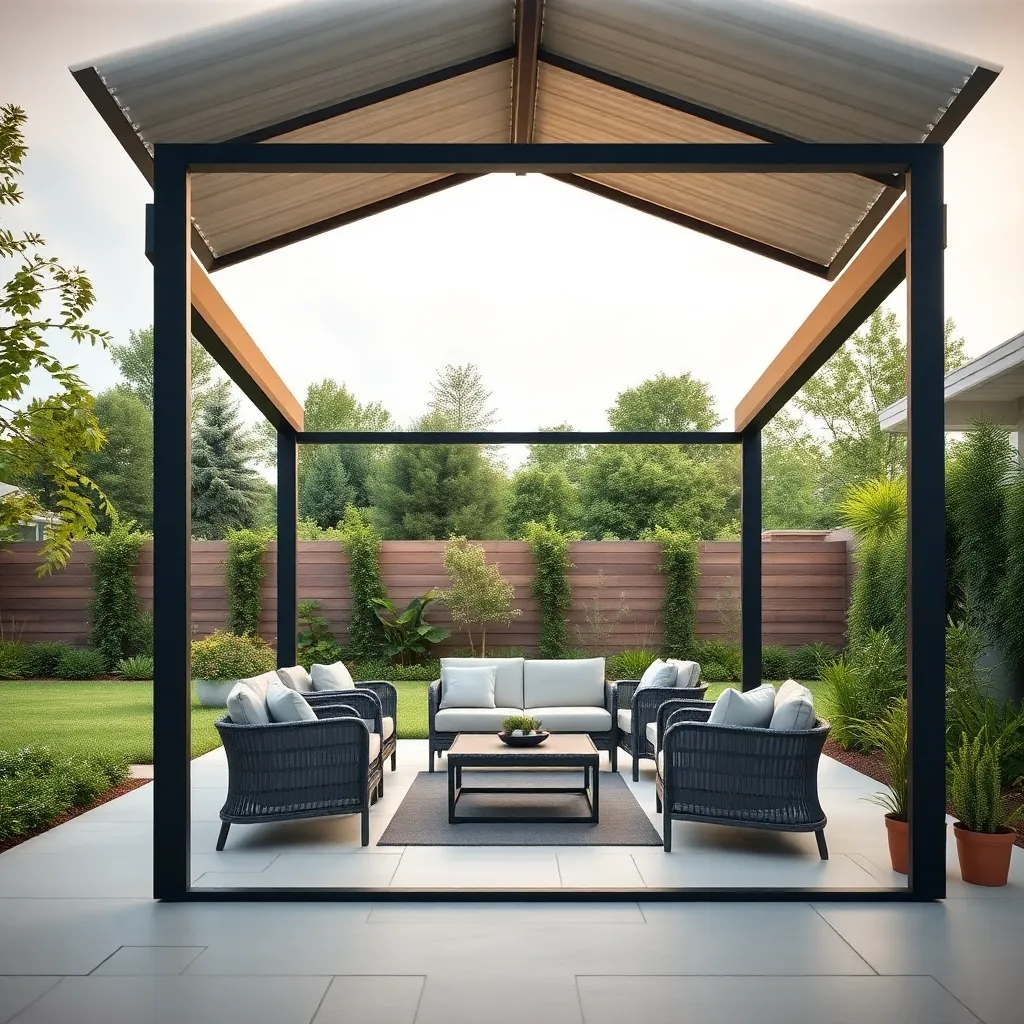
Modern metal frame gazebos offer a sleek, durable alternative to traditional wooden structures, perfect for homeowners seeking a contemporary look. When selecting materials, opt for powder-coated aluminum or galvanized steel to ensure rust resistance and low maintenance. For a balanced design, consider dimensions around 10×10 or 12×12 feet, providing ample shade without overwhelming your outdoor space.
To maximize versatility, incorporate design elements like removable side panels, retractable canopies, or integrated LED lighting for evening use. Advanced tips include anchoring the frame with concrete footings to enhance stability and using modular components to allow future expansion or customization. This approach ensures your metal gazebo remains both stylish and functional year-round.
Incorporating Built-In Seating Features
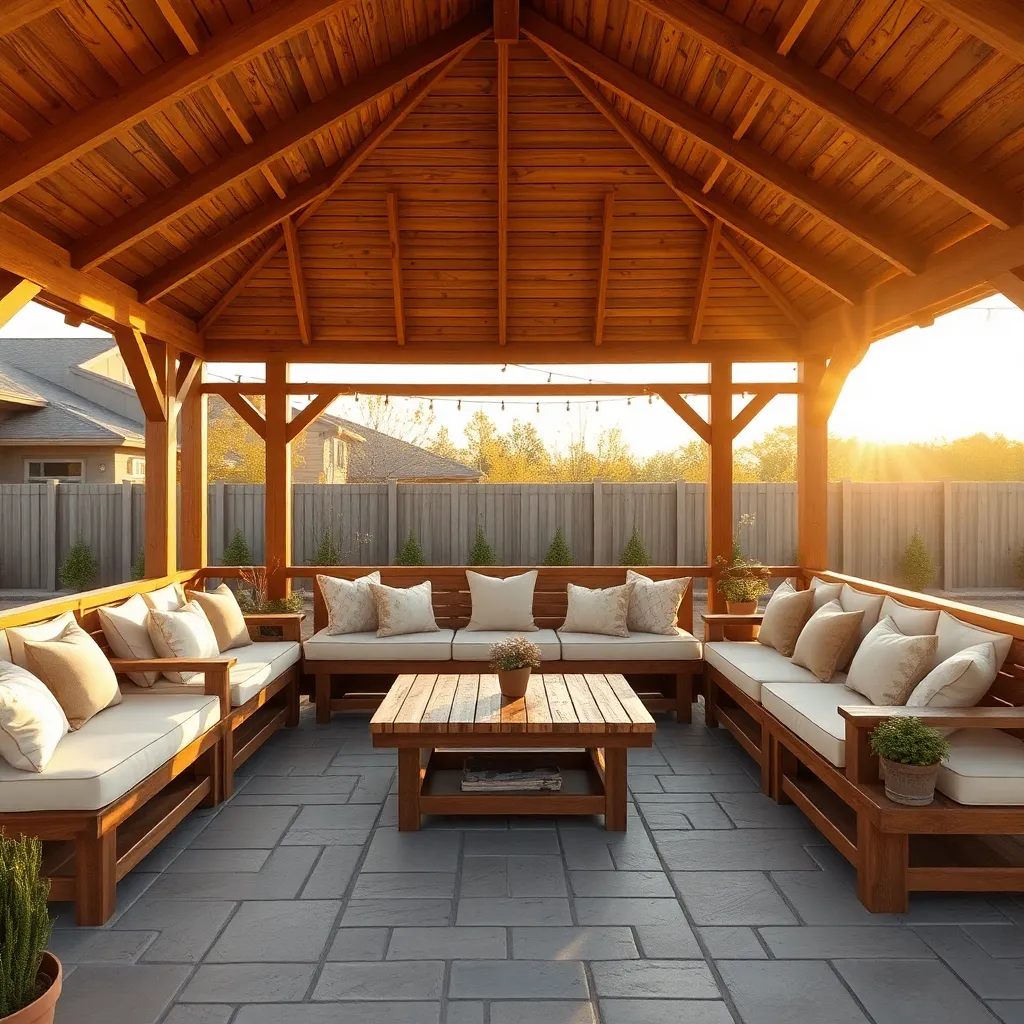
Incorporating built-in seating within your gazebo not only maximizes space but also enhances comfort and functionality. For durable and weather-resistant options, consider using treated hardwoods like cedar or teak, which resist rot and insects. When planning dimensions, aim for seat heights around 18 inches and depths between 15 to 20 inches to ensure ergonomic comfort for most users.
To elevate your design, integrate storage compartments beneath the benches for stowing cushions or garden tools, which keeps your outdoor area tidy. For advanced customization, embedding LED lighting strips under the seating edges or using modular sectional designs can add both ambiance and flexibility, adapting your gazebo to various social settings with ease.
Adding Adjustable Canopy Covers
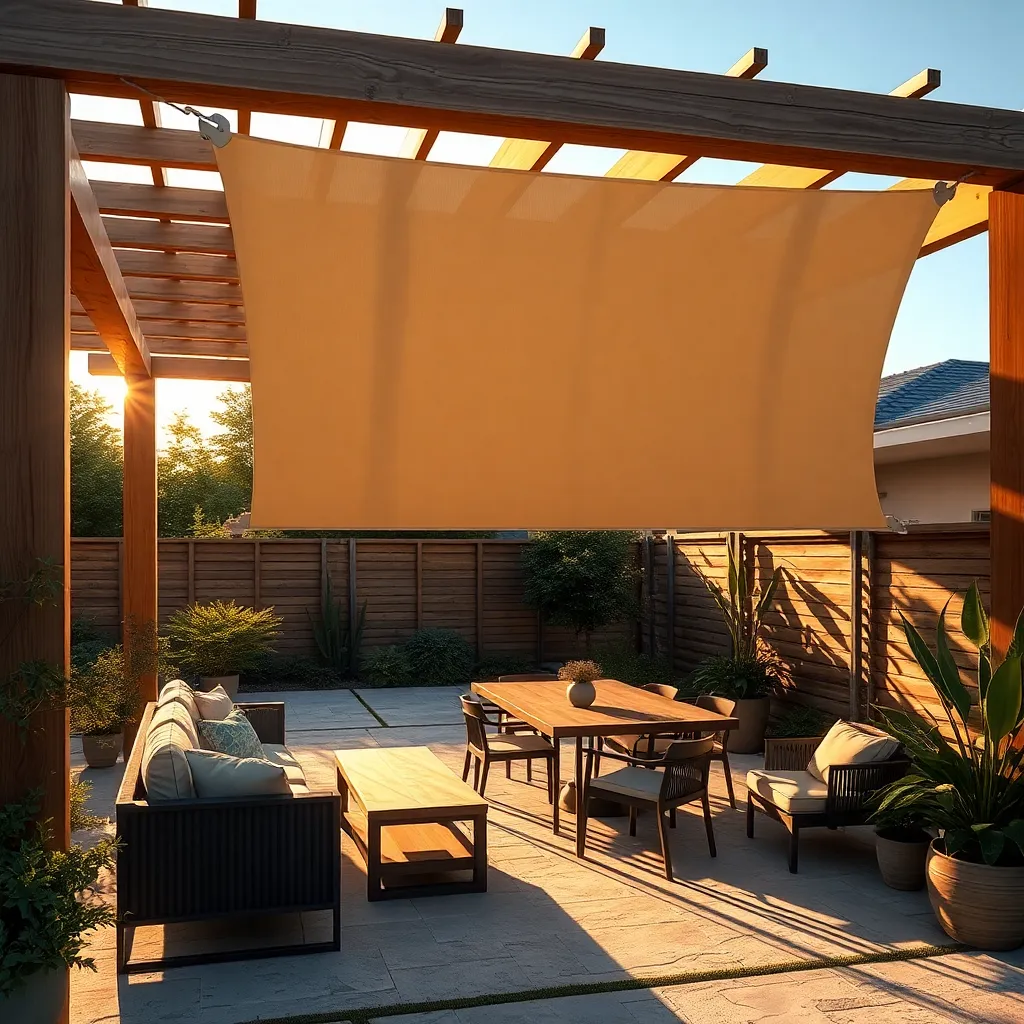
Adding an adjustable canopy cover to your gazebo allows for flexible shade and weather protection tailored to your outdoor needs. Choose durable, weather-resistant materials like UV-protected polyester or acrylic fabric, paired with a sturdy aluminum or powder-coated steel frame for longevity. For beginner-friendly installation, opt for a retractable system with easy-to-operate pulley cords or motorized controls to adjust coverage quickly.
To enhance both function and style, consider integrating features like wind-resistant locking mechanisms and water-resistant seams to improve durability during varying weather conditions. Advanced options include modular canopy panels that can be swapped or layered for different seasons, plus adding side curtains or mesh screens for extra privacy and insect protection. Aim for a canopy size that extends at least 2 feet beyond the gazebo edges to maximize coverage without overwhelming the structure.
Designing Gazebos for Small Yards
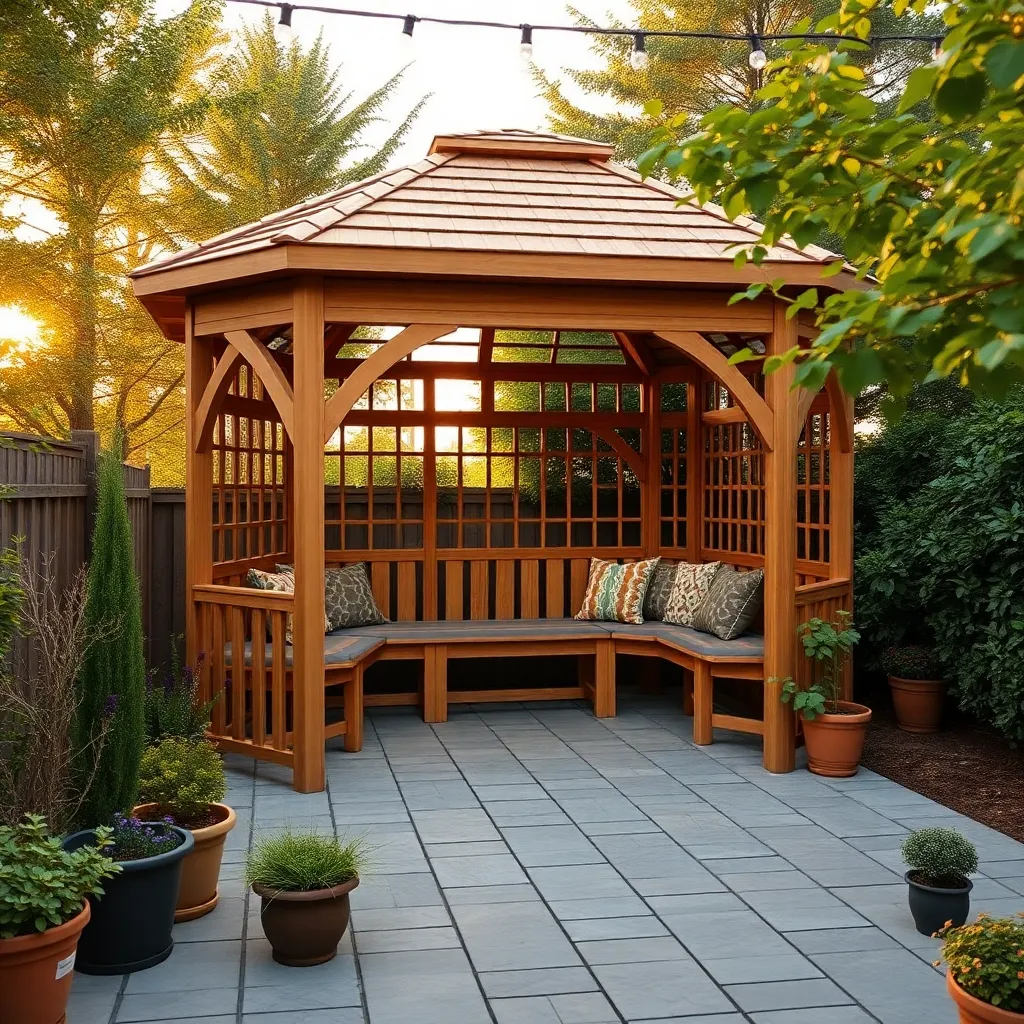
When designing gazebos for small yards, focus on compact, space-saving structures such as hexagonal or octagonal shapes that maximize usable area without overwhelming your garden. Opt for lightweight materials like aluminum or cedar wood, which provide durability while keeping the visual footprint minimal. Incorporate built-in seating along the gazebo’s perimeter to free up floor space and create a multifunctional area perfect for relaxing or dining.
To enhance both functionality and style, consider adding retractable side panels or curtains that offer privacy and protection from the elements without permanently enclosing the space. For advanced customization, integrate vertical planters or hanging pots on the gazebo’s frame to bring greenery upward, saving ground space and adding natural beauty. Keep your design dimensions modest, ideally no larger than 8 by 8 feet, to ensure the gazebo fits comfortably within limited yard boundaries.
Integrating Lighting and Electricals
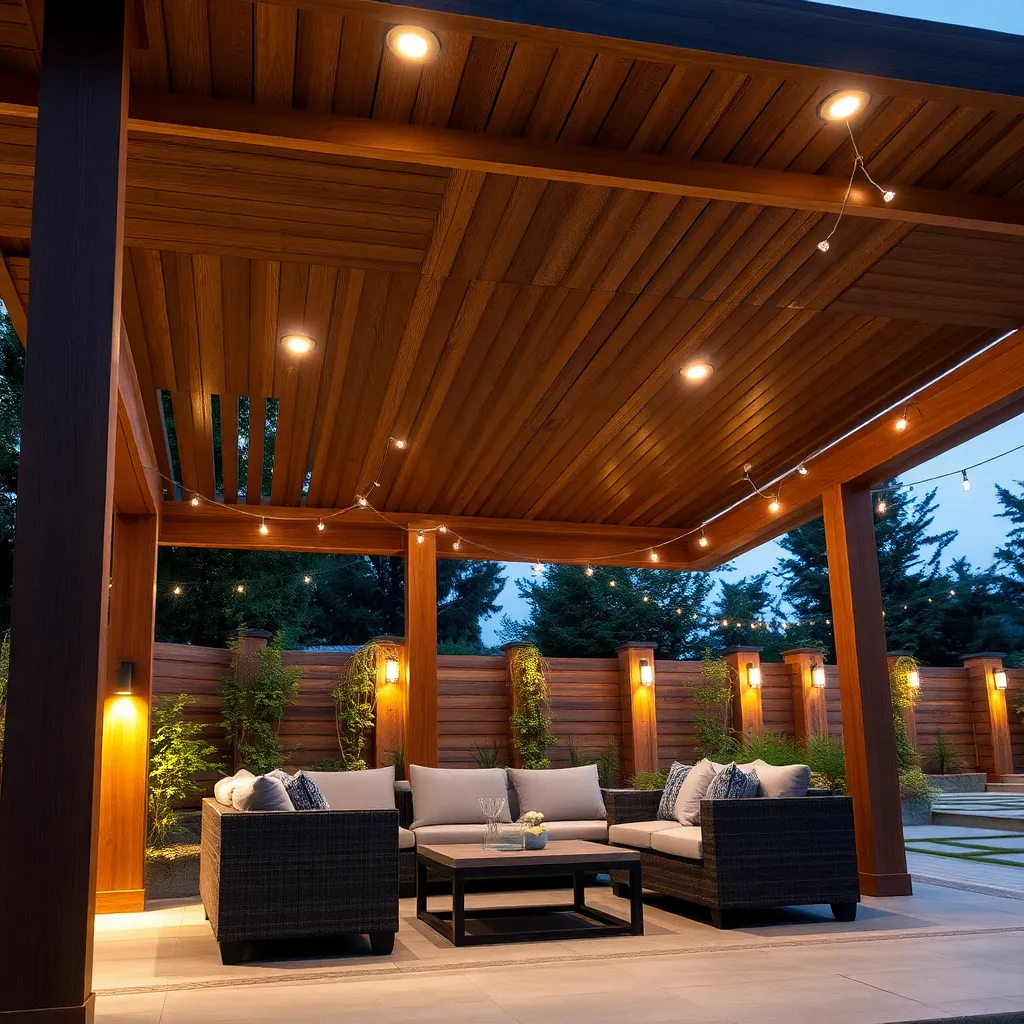
When integrating lighting and electricals into your gazebo, start by planning the layout to include weatherproof outlets and LED lighting fixtures designed for outdoor use. Use GFCI-protected circuits to ensure safety and consider installing dimmable lights for versatile ambiance. Running conduit through posts or beneath decking keeps wiring hidden and protected from the elements, preserving the gazebo’s clean look.
For advanced customization, incorporate solar-powered lights or smart home-compatible fixtures to enhance energy efficiency and control. Adding ceiling fans with integrated lights can improve comfort and functionality during warmer months. Always consult a licensed electrician to ensure all installations meet local codes and avoid costly mistakes.
Choosing Weather-Resistant Materials
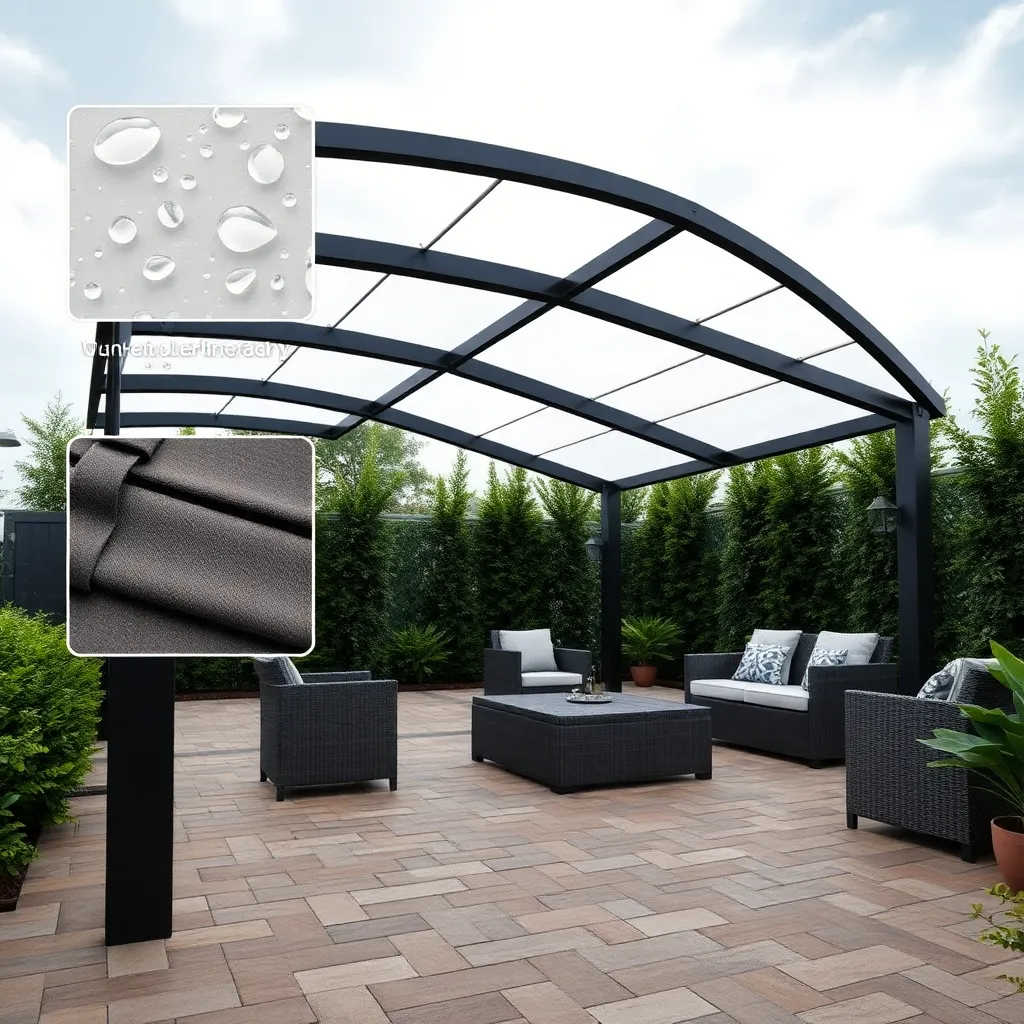
When selecting materials for your gazebo, prioritize weather resistance to ensure longevity and minimal maintenance. Popular options include pressure-treated wood for durability, aluminum for rust resistance, and vinyl for low upkeep. Additionally, consider finishes like sealants or powder coatings that protect surfaces from sun damage and moisture.
For advanced protection, incorporate design elements such as sloped roofs with quality shingles or polycarbonate panels to shed rain effectively. Also, ensure all joints and fasteners are corrosion-resistant, like stainless steel screws, to withstand harsh conditions. Implementing these tips will keep your gazebo sturdy and inviting through every season.
Personalizing Gazebo Color Schemes
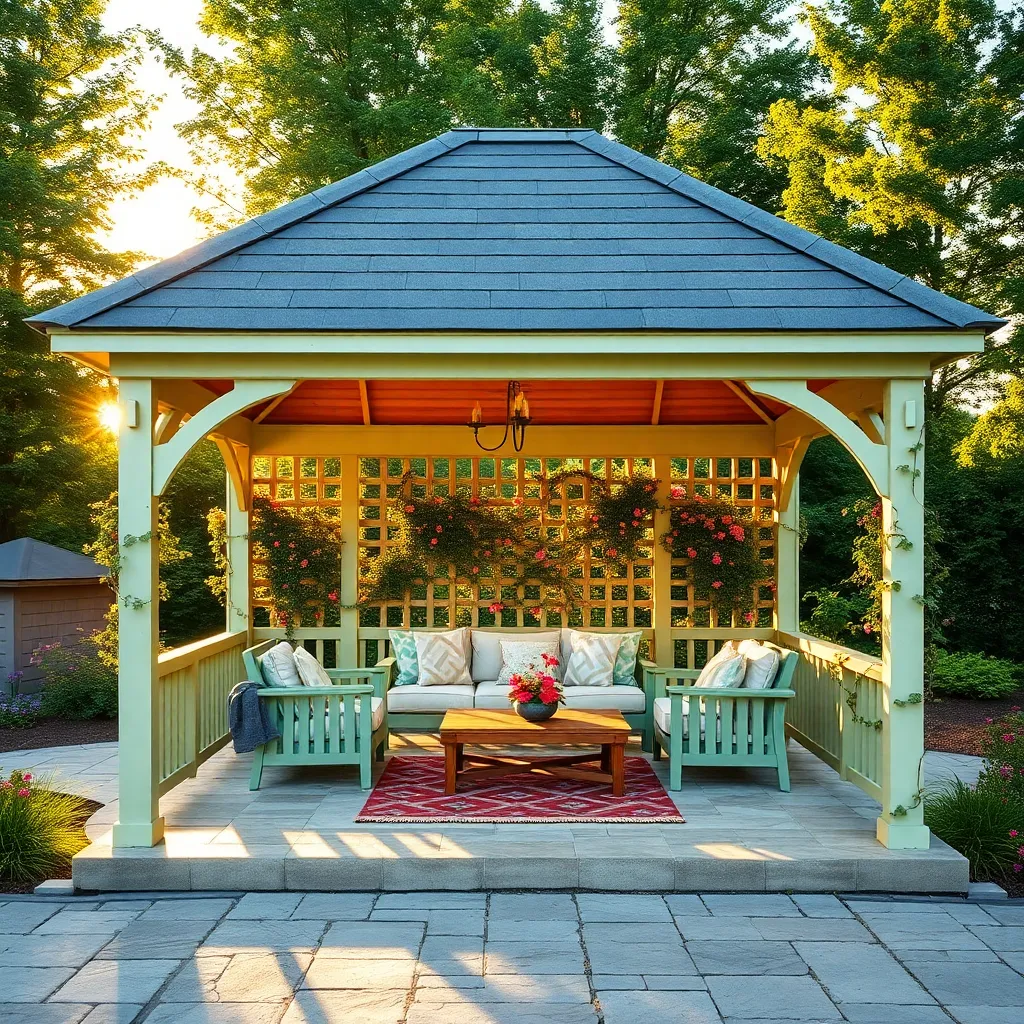
Start personalizing your gazebo’s color scheme by selecting weather-resistant paints or stains designed for outdoor wood or metal surfaces to ensure lasting vibrancy. Consider neutral base colors like soft grays or warm beiges for a versatile look, then add accent hues on trim or lattice panels to create visual interest without overwhelming the structure.
For a more advanced approach, use color blocking techniques by combining complementary or contrasting shades on different sections, such as roof beams and posts, to highlight architectural details. Don’t forget to test small paint samples outdoors in different lighting and seasons, so you can confidently choose colors that enhance your landscaping and personal style year-round.
Maintenance Tips for Long-Lasting Gazebos
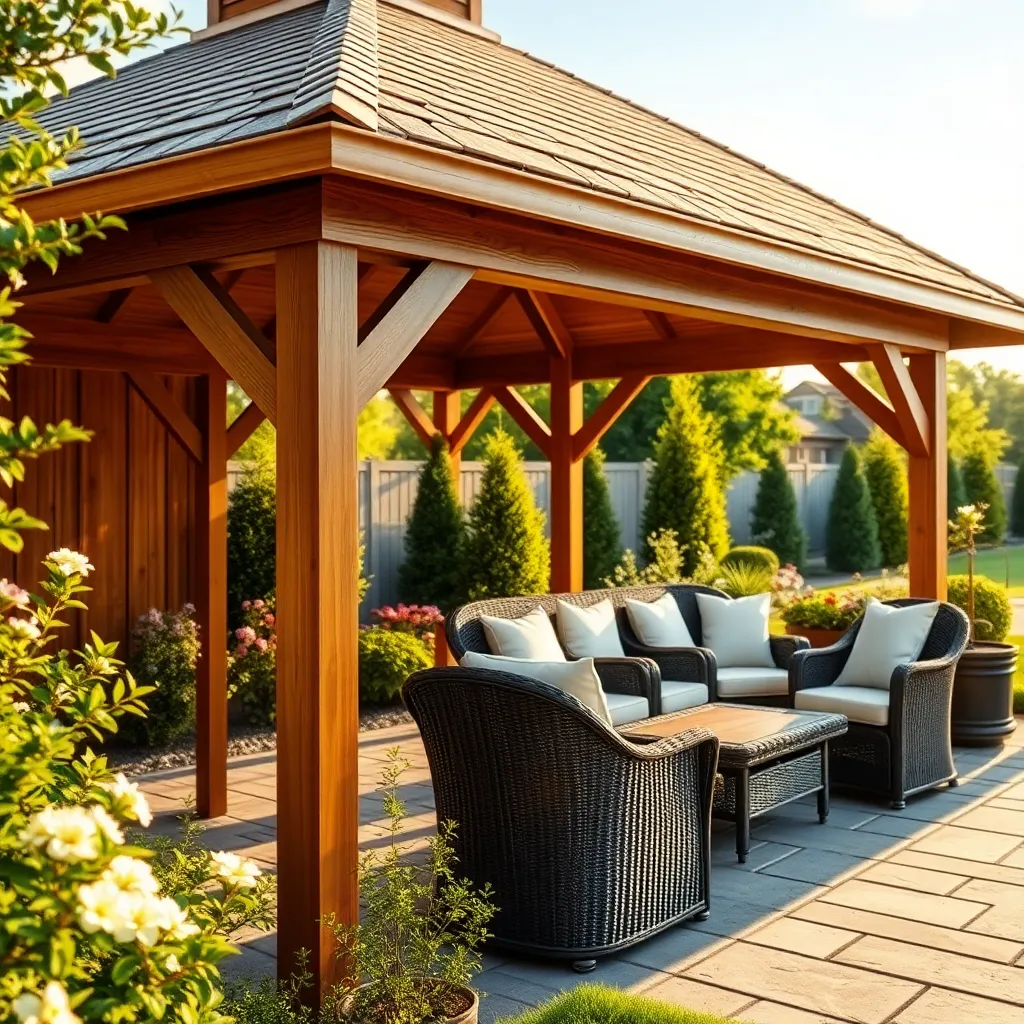
To ensure your gazebo stands the test of time, regularly inspect and clean its structure. Use a mild soap solution and a soft brush to remove dirt and debris from wood or metal surfaces, preventing mold and rust. For wooden gazebos, apply a fresh coat of weather-resistant sealant or stain every 1-2 years to protect against moisture and UV damage.
Pay attention to design details like reinforcing joints and securing hardware to withstand wind and heavy use. Consider adding removable or roll-up weatherproof curtains made from durable, UV-resistant fabrics for extra protection and versatility. Finally, ensure proper drainage around your gazebo base to avoid water pooling, which can cause foundational damage over time.
Conclusion: Creating Beautiful Outdoor Spaces
In exploring the 10 customizable gazebo designs, we’ve uncovered inspiring ways to create inviting, personal spaces that deepen connection and comfort in your home. From cozy nooks encouraging intimate conversations to open-air layouts perfect for lively gatherings, each design reflects how thoughtful environments can nurture stronger bonds. Now, take a moment to envision which gazebo style resonates most with your relationship goals—then start sketching your own blueprint or gathering ideas to bring that vision to life. Remember, the spaces we create shape the moments we share, fostering lasting memories and closeness. Be sure to save or bookmark this article so you can revisit these ideas whenever you’re ready to transform your outdoor space into a haven of togetherness. By investing in environments that invite warmth and connection, you’re taking an empowering step toward a relationship filled with joy and resilience. Your perfect gazebo—and your thriving relationship—are just a design away!

